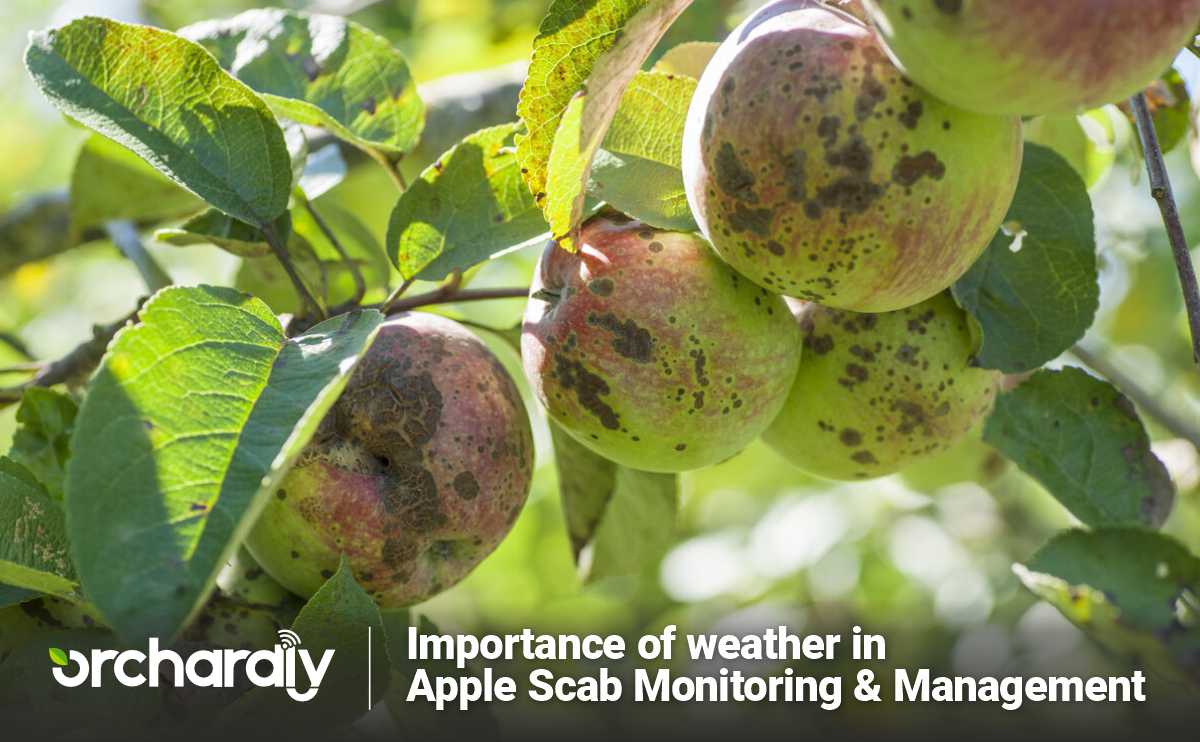Apple scab, caused by the fungus Venturia inaequalis, is globally the most devastating disease affecting apples when measured by economic loss, the amount of fungicides needed to control scab and effort spent by growers to monitor infestations and to time treatments. The disease is destructive especially where spring weather is mild and wet. The scab fungus overwinters in infected leaves that have fallen to the ground. As spring approaches the fungus produces spores (Ascospores, the initial inoculum for the disease) that are discharged into air and carried to developing apple buds. When the spores land on wet apple buds, leaves, or fruit, and if they remain wet for a few hours, the spores germinate and grow into the apple tissue. The pathogen can infect wet leaf or fruit surfaces at a range of temperatures from 6° to 28°C. The time duration that leaves and fruit need to be wet, however, is much shorter at optimum temperatures than at either extreme (9 hours at 18–24°C versus 28 hours at 6 to 28°C). The spores are released over a period of 1-2 months following bud-break and peak from late pink through petal fall when there will be greatest threat for infection.
Weather parameters like temperature and leaf-wetness duration, are therefore, important in determining the severity of scab.
The critical period for scab control is from the beginning of bud growth until the apples are 1/2 inch (1.27 cm) in diameter. There are two approaches to control apple scab using fungicides—protective and post-infective (kick-back or eradicant). A combination of both types of programs can be followed. The application of fungicides remains the primary tool to achieve control against apple scab. Spray programs may include protectant fungicides with broad-spectrum activity and affect fungal spore germination such as Dithianon, Captan, Mancozeb, Ziram Bordeaux mixture (copper-based) etc , or systemic fungicides, which are absorbed by the plant and affect fungal growth, such as Dodine , Difenoconazole , Pyraclostrobin, Tebuconzole .
Management of apple scab is priority for growers, since even subtle infections reduce fruit quality and render them unusable. Successful apple scab control relies on good spray coverage as well as good timing. During seasons where the disease pressure is high (frequent rains, warm temperatures), fungicide applications will be important. Infection risk is highest in spring and early summer since young leaves and fruit are particularly susceptible to Scab infections. Mature leaves and fruits gain resistance as they age, while young leaves are most susceptible the first 8 days after emergence. Moreover, failure to control scab during spring is difficult to amend later in the season. Thus, to avoid a buildup of scab in the orchard, the timing of fungicide application during spring is critical. Using weather-based decision support systems, growers can monitor infection risk to properly time fungicide applications.


